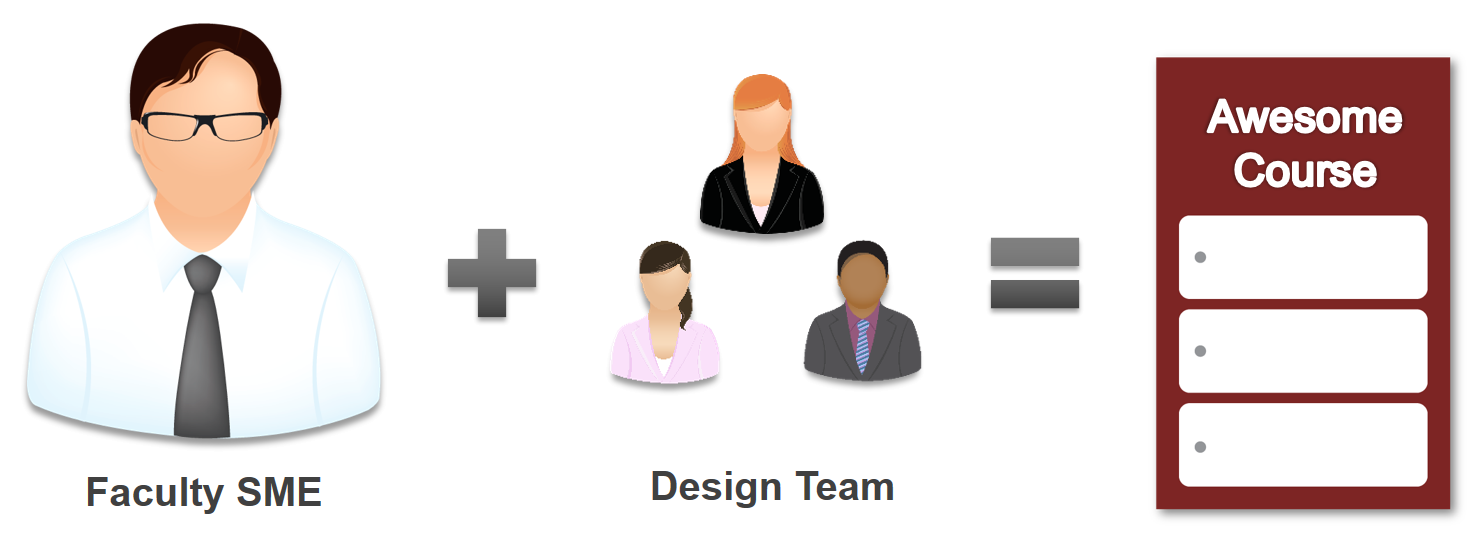 Here at Synergis, curriculum design is a collaborative partnership. At the heart of this partnership are instructors who serve as Subject Matter Experts (SMEs). They collaborate closely with our instructional design team to create awesome courses. It’s a critical role and a unique opportunity to serve.
Here at Synergis, curriculum design is a collaborative partnership. At the heart of this partnership are instructors who serve as Subject Matter Experts (SMEs). They collaborate closely with our instructional design team to create awesome courses. It’s a critical role and a unique opportunity to serve.
If you haven’t worked with us before, you probably have lots of questions about the SME role. Below, you’ll find answers to the top five questions.
-
How do I contribute to designing a course?
You partner with the instructional design team to create each element of the course. This includes writing learning objectives; sequencing course materials; designing activities, discussions, and assessments; and creating video lectures and multimedia interactions as needed.
You bring:

One of our stand-out SMEs, Daniel Ortman, helps design information literacy courses for Warner Pacific College.
- Subject-Area Expertise: You have a deep understanding of your field and the concepts and skills that are important for students to master. We rely on you to determine what the course should cover, in what sequence, and how rigorously it should be presented and assessed. Together, we determine the most effective way to present this information to students.
- Institutional Knowledge: Our institutional partners have unique values, cultures, and people. We rely on your experience combined with direction from program leadership to tailor each course to the specific needs of the institution, degree, faculty, and students.
- Teaching Experience: We have face-to-face and online teaching experience, but we don’t teach our partners’ courses—that’s up to you and fellow faculty. You provide the instructor’s perspective when it comes to how you (and other faculty) deliver the course. Whether it’s setting up the gradebook, building online forums, or creating notes for other faculty, our goal is to make the course navigable and easy to deliver.
So you can focus 100% on course content, there’s a few things we don’t expect:
- You needn’t be an expert in online education or technology–we’ve designed hundreds of courses, for diverse programs, in various learning management systems. We’ve partnered with veteran online instructors and those who’ve never taught online. We’ll work with you to create a course that achieves your vision–and offer ways to expand that vision.
- We don’t expect you to be an expert in our process. An instructional designer will guide you through each step and coordinate efforts with other team members.
- You don’t need to build the course in the learning management system (LMS). You’ll work closely with an instructional designer to create a course map document. Once finalized, an instructional technologist will use this document to build the course.
-
How much influence do I have over course direction and content?
“Combined knowledge, experience, and effort lead to the best possible course.“
You provide guidance on every aspect of the course, and we’ll often take your lead. We typically defer to you on textbook selection, which concepts and skills the course should teach, and the breadth, depth, and rigor of learning. You work closely with the instructional designer to sequence and draft student-facing verbiage. Our role is to help you refine your vision, to ensure your goals for students–stated as learning objectives–are advanced via the course design, and to offer perspective and possibilities on how to present content, especially for online learners.
-
What is the time commitment and schedule?
Design projects typically take about 16 weeks. Although your time commitment may vary based on your own pace and the course’s needs, expect 3–5 hours of project work most weeks, including regular web conferences. We understand you likely have teaching responsibilities (and sometimes a day job as well). We’re flexible with scheduling and we parse out the work to maximize your time and expertise.
-
How do we collaborate with each other?
Most collaboration occurs asynchronously via email: we map course elements in a Word document and pass it back and forth with suggestions, questions, and ideas. Expect weekly or bi-monthly web conferences with screen sharing. These are a great way to brainstorm new ideas and review changes. We schedule them when its mutually convenient and provide guidance on how to prepare for each. To learn more about our unique collaborative style, check out “Partnering with Academic Services: Three Aspects of Collaboration”.
-
Do you have any tips for success?

We believe our combined knowledge, experience, and effort lead to the best possible course design. We achieve this by forming a truly collaborative partnership.
You can help us by:
- Offering your vision for the most important things students should get out the course as a whole and within each activity or assignment.
- Being open to discussion, feedback, and new ideas.
- Submitting drafts incrementally and on time to allow sufficient time for us to review throughout the project.
- Bringing a positive, can-do spirit.
